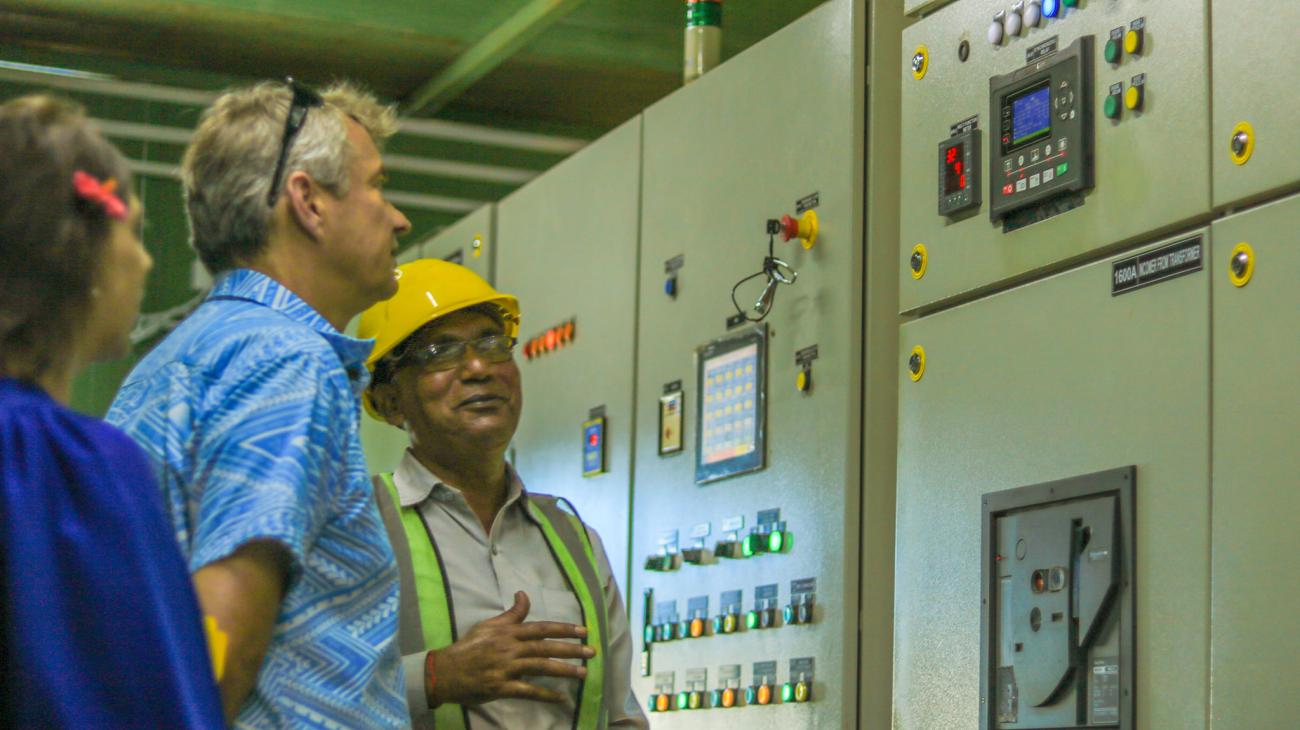The launching of a new electricity source that will benefit up to 5,000 families on the north-western side of the island of Upolu, is a milestone for Samoa’s renewable energy efforts. It is also a significant contribution to the country’s climate action commitments.
The SAT $11.3 million Afolau Biomass Gasification Power Plant, is a first of its kind facility to be set up in Samoa and the region.
“This project is one of the Government’s long-term development goals to generate 100 per cent of the country’s electricity needs from renewable energy sources by 2025, which is Samoa’s contribution under the Paris Agreement, to reduce Green House Gas emissions, as well as reduce Samoa’s reliance on diesel as we are now doing,” said Prime Minister, Tuilaepa Dr. Sailele Malielegaoi.
“At the moment, up to 50 per cent of our electricity needs are being produced by renewable energy sources such as solar, wind and hydro power. We can now add biomass gasification – a new renewable energy source for Samoa and countries in our region – to that list. This Plant also adds to Samoa’s contribution to global efforts to reduce greenhouse gas emissions, or carbon dioxide which have depleted the ozone layer, and which have severely impacted on global warming and climate change as we have seen recently with cyclones Evan and Gita.”
Biomass gasification is a process whereby wood chips are dried before feeding inside a gasifier in which, without oxygen, produce syn gas at very high temperatures then cooled down before being used to produce electricity from gas generators that is then sent to the Electric Power Corporation grid. Weeds and invasive species like tamaligi, puluvao, coconut logs, husks and coconut shells are chopped up and used as fuel to feed the biomass gasifier.
The Plant will produce five-million-kilowatt an hour (kWh) of electricity per annum based on running the 750kw plant at 85 per cent of its capacity 90 per cent of the time, and will save the country up to 1.2 million litres of diesel per annum at a cost of $3 million Tala. It will also reduce emission of carbon dioxide by 3.7 tonnes a year from a diesel power station, to add to the total of 60 tonnes per annum of harmful gases that have been reduced through use by EPC of renewable energy sources such as hydro, solar and wind.
The Plant is part of activities under the IMPRESS – Improving the Performance and Reliability of Renewable Energy Power Systems in Samoa – Project. This project was funded by the Global Environment Facility (GEF) via the United Nations Development Programme (UNDP), and the European Union and the Government of Germany’s Government Agency of International Cooperation (EU-GIZ ASCE). The project was implemented by the Ministry of Natural Resources and Environment, Ministry of Finance, Electric Power Corporation (EPC) and the Samoa Trust Estates Corporation (STEC).
“UNDP is fully committed to working with the Government of Samoa in addressing the threat of climate change. Samoa has shown great dedication in combating climate change by reducing greenhouse gas emissions that contribute to global warming, amongst other commendable actions,” said UNDP Resident Representative, Jorn Sorensen.
“The launching of this Plant has proven to the region and the world that Samoa remains true to its word and means business when it comes to climate-proofing its future. The Biomass Gasification Power Plant has made Samoa an example to other Small Island Developing States (SIDS) to emulate in the wise use of its indigenous biomass resources as a sustainable energy resource, as well as incorporating it with Samoa’s other developments in areas like agriculture as demonstrated by STEC.”
Construction for the Biomass Gasification Power Plant began in February 2019 and ended the same month in 2020. It was connected to the EPC grid in April 2020.




















